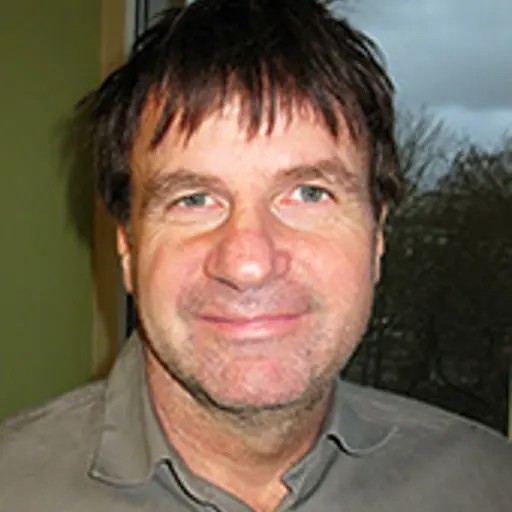The course syllabus contains changes
See changesCourse syllabus adopted 2021-02-26 by Head of Programme (or corresponding).
Overview
- Swedish nameSerier och derivator i flera variabler
- CodeMVE500
- Credits6 Credits
- OwnerTKSAM
- Education cycleFirst-cycle
- Main field of studyMathematics
- DepartmentMATHEMATICAL SCIENCES
- GradingTH - Pass with distinction (5), Pass with credit (4), Pass (3), Fail
Course round 1
- Teaching language Swedish
- Application code 58137
- Open for exchange studentsNo
Credit distribution
Module | Sp1 | Sp2 | Sp3 | Sp4 | Summer | Not Sp | Examination dates |
|---|---|---|---|---|---|---|---|
| 0116 Examination 4.5 c Grading: TH | 4.5 c |
| |||||
| 0216 Laboratory 1.5 c Grading: UG | 1.5 c |
In programmes
- TKATK - ARCHITECTURE AND ENGINEERING, Year 2 (compulsory)
- TKSAM - CIVIL ENGINEERING, Year 2 (compulsory)
Examiner
 Jonny Lindström DödsboContact
Jonny Lindström DödsboContact
Eligibility
General entry requirements for bachelor's level (first cycle)Applicants enrolled in a programme at Chalmers where the course is included in the study programme are exempted from fulfilling the requirements above.
Specific entry requirements
The same as for the programme that owns the course.Applicants enrolled in a programme at Chalmers where the course is included in the study programme are exempted from fulfilling the requirements above.
Course specific prerequisites
Introductory course in calculus, Linear algebra, Computational mathematicsAim
The purpose of the course is, together with other mathematics courses, to give a general mathematicial orientation which is as useful as possible in their future studies and in their work capacity. The class should, in a logical and consistent way provide the student with the basic knowledge in mathematical analysis which is necessary in Civil engineering.Learning outcomes (after completion of the course the student should be able to)
- Define series and sequences of numbers, and determine whether they converge or not.- Define the concept powerseries, and define the related concepts of absolute convergence and uniform convergence. The student should also be able to apply easier convergence criteria and be able to identify certain standard powerseries.
- Define function spaces and norms of functions on an interval .
- Define and use the concepts of vectorvalued functions and functions in several variables, and related concepts.
- Describe sets in Rn with the topological concepts neighborhood, inner/exterior point, boundary point, open/closed set as well as the complement to a set.
- Define the concept continuity for functions in several variables, and be able to apply the related calculus to be able to determine whether a function is continuous or if a certain limit exists.
- Know and be able to apply the chain rule for compositions of functions in several variables.
- Define and handle the concept partial derivative, differentiable function, gradient, directional derivative, Jacobi-matrix and the Hessian, of a function in several variables.
- The student should be able to linearize a vectorvalued function in several variables, as well as use the Jacobi matrix for such a function and apply it for finding approximations.
- Determine Taylor polynomials for real-valued functions in one and several variables and apply it to find approximations.
- With the aid fo the Hessian be able to classify critical points: local minimum/maximum or saddle points.
- Use derivatives to solve equations numerically, especially Newton's method (Matlab).
- Solve applied max-min-problem with the aid of derivatives (Malab).
- Be able to identify partial differential equations of standard type: parabolic, hyperbolic and ellitpic PDE.
- Especially be able to identify Poisson's equation, heat equation and the wave equation in one and several variables, with boundary and initial conditions.
- Define and compute Fourier developments for functions in an interval
- Determine when a Fourier series converges, and when the Fourier development of a function converges to the function.
- The student should be able to identify and calculate fundamental solutions or eigenfunctions of simple types of separable partial differential equations (differential operators), with the help of separation of variables, and should be able to define the eigenvalue of an eigenfunction.
- Should be able to explain what it means that functions are orthogonal, and understand what it means that functions can be written as a sum of eigenfunctions.
- With the aid of Fourier series be able to find solutions to simple types of PDEs.
Content
- Functions in several variables- Powerseries
- Sequences of numbers
- Taylor series
- Partial derivatives
- Extremal value problems
- Fourier series
- Fourier developments
- Partial differential equations (PDE)
- Separation of variables as a technique for solving PDE
- Eigenfunctions and developments in eigenfunctions
- Applications of the above matieral in Matlab
Organisation
The course consists of the following learning activities: Lectures, excercises and computer exercises.Literature
Is given at the start of the class.Examination including compulsory elements
To pass the class one has to pass the following independent course goals:- 4.5 p written exam (grade: U,3,4,5)
- 1.5 p computer exercise (grade: Pass/Fail)
The course examiner may assess individual students in other ways than what is stated above if there are special reasons for doing so, for example if a student has a decision from Chalmers on educational support due to disability.
The course syllabus contains changes
- Changes to examination:
- 2021-10-14: Location Location changed from Johanneberg to Halls at Lindholmen by moty
[2021-10-25 4,5 hec, 0116]
- 2021-10-14: Location Location changed from Johanneberg to Halls at Lindholmen by moty